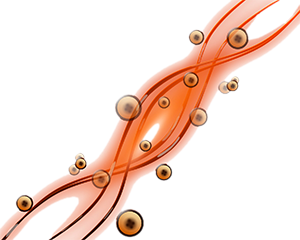THE PROBLEM
Although DECLs allow the identification of hits from chemical collections containing up to several millions of different compounds, selection experiments often show low signal-to-noise ratio and poor correlation between sequencing counts and binding affinity.
Encoded Dynamic Combinatorial Chemical Library (EDCCL)
In order to enhance the enrichment factors of potent binders against weak binders and background noise, the group of Prof. Zhang at B CUBE (Technische Universität Dresden) applied dynamic combinatorial chemistry principles to self-assembled DNA-encoded chemical libraries.
In essence, DNA-encoded dynamic combinatorial chemical library (EDCCL or DNA Encoded Dynamic Library – DEDL) relies on the use of relative “unstable” DNA-conjugate oligonucleotide pairs which under the thermodynamic “selection pressure”can “re-shuffle” shifting the equilibrium towards the generation of potent bidentate binders, eventually yielding to an increase of high-affinity ligand counts and a decrease in noise from low-affinity pairs.
Non-dynamic self-assembling
Under non-dynamic conditions, the annealing temperatures of the self-assembling sub-libraries are typically much higher than room temperature. Therefore, after pairs are randomly generated, re-shuffle is not possible and only statistical amount of high affinity binding pairs are formed, causing a sub-optimal signal/noise ratio after decoding (Figure 23).
Figure 23: Conventional selection using non-dynamic self-assembled libraries. Pairs cannot “re-shuffle”, thus only statistical amount of high affinity binding couples are formed causing a sub-optimal signal/noise ratio after decoding.
Dynamic self-assembling
When EDCCL principles are applied to self-assembled DNA-encoded chemical libraries, the randomly formed library pairs are relatively unstable at room temperature and can re-shuffle under the thermodynamicligand/target pressure to yield high-affinity pairs, with a remarkable improvement of the signal-to-noise ratio after sequencing decoding (Figure 24).
Figure 24: Selection using EDCCLs. The randomly formed library pairs can “re-shuffle” and under thermodynamic ligand/target pressure reconstitute high-affinity pairs, yielding to superior signal-to-noise ratio after sequencing decoding.
Heat induced EDCCL
To take advantage of both stably assembled conventional self-assembled libraries (easier to handle during selection and decoding process) and EDCCLs (superior signal-to-noise ratio), the dynamic concept was extended to heat-induced EDCCLs (hi-EDCCLs), in which the heat-induced recombination process of stable DNA duplexes and affinity capture are carried out in physically different compartment. Zhang et al. described a micro-fluidic system in which the two sub-libraries are first hybridized in a “cold” chamber and incubated with the target protein. Then, the eluted non-binding pairs are re-shuffled in a “hot” chamberbefore being transferred again in the initial “cold” annealing cell. Repeating the cycle multiple times (e.g. 5) it is possible to obtain a remarkable increase in enrichment of high-affinity binders over low-affinity pairs, in good agreement with mathematical simulations (Figure 25).
Figure 25: Selection using hi-EDCCLs. The randomly formed stable library pairs are first hybridized and incubated with the target protein in a “cold” chamber. After elution of non binding library, the pairs are re-shuffled in a “hot” chamber and the selection cycle repeated.
Heat induced EDCCL proof-of-concepts and other applcations
To date, the EDCCLs principles have been successfully demonstrated on model systems(streptavidin/iminobiotin) and in in-solution selection experiments for the identification of binding pairs against alpha-1-acid glycoprotein (AGP). Moreover, EDCCL technology was also applied to facilitate the discovery of DNA-templated chemical reactions: if two sub-libraries containing a 5’-alkyne- DNA molecule and a 3’-azide DNA-conjugate respectively are mixed and annealed in a 1:5 ratio under non-dynamic conditions the expected conjugation reaction does not occur at room temperature. Differently, applying EDCCL principles to the very same model system, it was possible to clearly detect the formation of the expected conjugation product (i.e., covalent conjugation of the two strands by copper-free “click reaction“) both at room temperature and at 4°C.

